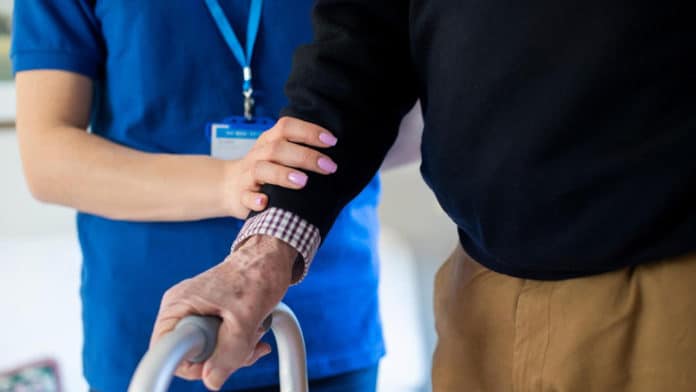Parkinson’s disease, a brain disorder that affects neurons in an area of the brain that controls movement, causing tremors, difficulty walking, and other motor problems. As the disease progresses, people may have difficulty walking and talking.
To assess the severity of symptoms, clinicians rely on a handful of tests, such as those that measure gait speed — or how fast people walk. These tests are usually done in the clinic once every few months, and results can be affected by several factors, including the experience of the person conducting the assessment.
Usually, gait speed is the sixth vital sign and is also linked to life expectancy. For example, If you walk faster, you can expect to have a longer life.
In a new study, EPFL scientists determine how gait speed is affected in Parkinson’s. Twenty-seven people with Parkinson’s disease were recruited in the study. They were then provided with a foot-worn sensor that recorded how fast they walked.
During the clinical assessment, these patients were asked to do two types of walking tests: in one, people had to walk for 20 meters in a straight line; in another test, they were asked to walk in circles five times.
The walking tests were done when patients were on a medication that reduces motor problems, and then they repeated when individuals were off the medication. Based on the sensors’ data, scientists calculated the average and the fastest gait speed for each individual.
Study lead author Arash Atrsaei, a Ph.D. student in Aminian’s group, said, “Daily activities can give us more information and tell us what is happening in real life, so we asked the patients to go home and wear the sensor for one day. Using reliable algorithms that analyze motion data from the sensors, scientists monitored patients’ gait speed around the clock and in an objective manner.”
On average, it was found that patients have the same walking speed at home and in the clinic. The analysis also suggested that people tended to move slower during short walking bouts, for example, when they took a few steps and then stopped to do a different task faster during walking bouts that lasted more than one minute and mainly occurred outdoors.
During daily activities, some patients walked even faster than the maximum speed they walked in the clinic. These so-called ‘exceptional strides’ typically occurred between 30 minutes and three hours after taking their medication.
Scientists noted, “We can see the effects of the medication by measuring the gait speed.”
Atrsaei said, “The findings suggest that monitoring gait speed during daily activities with wearable technology could help doctors to optimize medication dosages depending on motor symptoms of individual patients. What’s more, the sensors and the dedicated algorithms allow clinicians to monitor patients remotely, which could help to protect vulnerable people in situations such as the coronavirus pandemic.”
Journal Reference:
- Atrsaei et al. Gait speed in clinical and daily living assessments in Parkinson’s disease patients: performance versus capacity. npj Parkinsons Dis. 7, 24 (2021). DOI: 10.1038/s41531-021-00171-0
